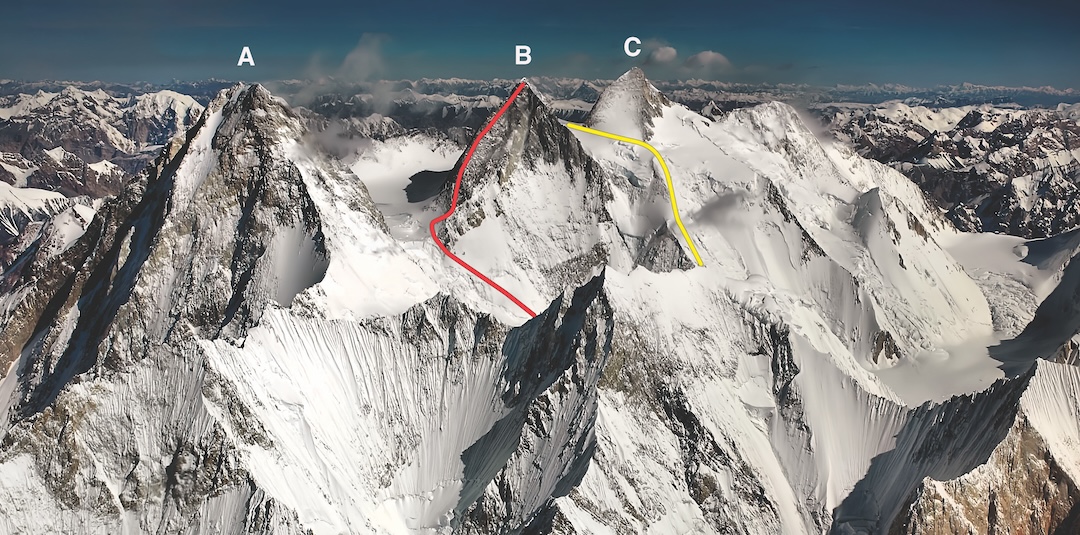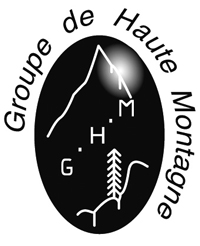©Jacek Wiltosinski/AAJ
First ascent of the west ridge of Gasherbrum III, Baltoro Muztagh, via Edge of Entropy (nearly 3,000m base camp to summit), July 31-August 4. Traversed mountain by descending east face and then the normal route (southwest ridge) of Gasherbrum II.
Before August 1975, Gasherbrum III, 48m short of 8,000m, was the highest unclimbed mountain in the world. That month the summit was reached by four members of a Polish expedition. The British mountaineer Alison Chadwick, her Polish husband Janusz Onyszkiewicz, Wanda Rutkiewicz, and Krzysztof Zdzitowiecki, climbed the standard Austrian Route on Gasherbrum II as
far as 7,400m. They then traversed below the summit pyramid to reach a high cwm between Gasherbrums II and III, from where they climbed a steep couloir splitting the southeast face of Gasherbrum III. It remains the highest mountain first ascended by women climbers.
Until 2024, there had only been one other ascent – in 2004 by a Basque pair that repeated the original route. However, less known and somewhat underrated was a spirited attempt on the west ridge in 1985 by the British alpinists Geoff Cohen and Des Rubens. From a previously stocked snow cave above the dangerous icefall at 6,900m, they climbed the ridge to 7,400m,
bivouacked, then left their gear and set off for the summit. The wind was fierce and the difficulties higher up proved harder than anticipated. At around 7,700m, with time running out and the prospect of an open bivouac with no equipment unthinkable, they retreated.
Fierce winds also presented a major problem to Aleš Česen (Slovenia) and Tom Livingstone (UK) when they went to attempt the ridge in 2022, forcing them to opt for an alternative plan and try the more sheltered northwest face. They were unsuccessful in this, but far more fortunate when they returned to the mountain two years later for another attempt on the west ridge. The pair made three acclimatization climbs, on the last spending a night at 7,000m. They then left base camp on July 31, and two days later regained the 7,000m camp below the start of the west ridge. Next morning they set off up the ridge, stopping for the first night at a little below 7,500m, and for the second at around 7,800m. Unable to erect a tent at the upper site, they were forced into an open sitting bivouac. They then bypassed the headwall via difficult climbing, possibly up to M6 on one pitch, reached the summit, and then descended the original route on the far side of the mountain. After a night spent at Camp 4 (7,400m) on the standard route to Gasherbrum II, base camp was regained on August 6.
The jury felt this to be a long, difficult and committing route on a rarely visited mountain only fractionally below 8,000m. In addition, it was climbed in a light alpine style by a team of two, and a logical descent made of the opposite side of the mountain - a good example that quality adventure over new ground is still possible on the world's highest mountains.




